The late Middle Ages saw the emergence of the Gothic church aesthetic in Europe, which peaked in popularity in the 12th and 16th centuries. Gothic architecture is distinguished by its lofty spires, pointed arches, and fine craftsmanship. It is a singular fusion of inventive talent and religious symbolism. A mystical and dramatic mood is created by the elaborate stained glass windows and ribbed ceilings of the great churches and cathedrals.
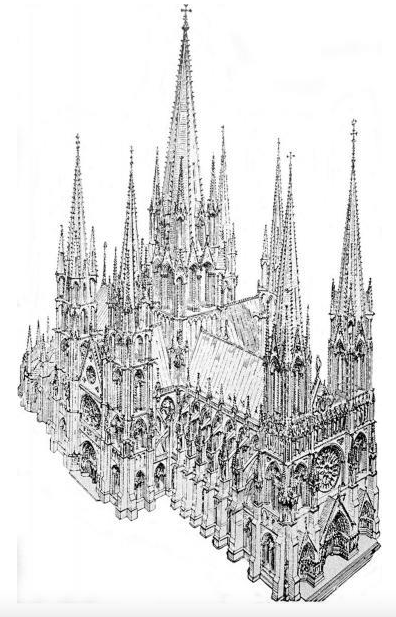 Building these churches took a long time, and coming up with the ideas took much more work. Abbot Suger is one of the most well-known designers of these works of art among the many others. Early Gothic architecture greatly benefited from Suger’s mission, which was to improve the spiritual experience through his designs.
Building these churches took a long time, and coming up with the ideas took much more work. Abbot Suger is one of the most well-known designers of these works of art among the many others. Early Gothic architecture greatly benefited from Suger’s mission, which was to improve the spiritual experience through his designs.
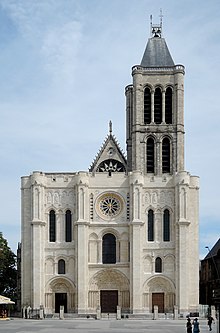
A major turning point in Gothic architecture was the construction of the Basilica of Saint-Denis. Suger placed a strong emphasis on lighting, using pointed arches and massive stained glass windows to create a heavenly and ethereal ambiance within the church. This strategy altered both the building’s physical construction and the way people regarded the spiritual parts.
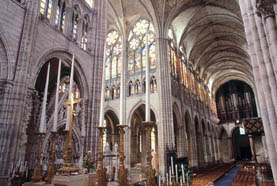
Suger believed that spiritual experiences were closely related to the aesthetic appeal of physical spaces. Under his direction, the Basilica of Saint-Denis experienced a significant metamorphosis. The addition of Gothic features like larger windows, ribbed vaults, and pointed arches improved and created new levels of significance. The way light played in sacred spaces became a symbol of the divine presence, elevating the spirit of the worshiper.
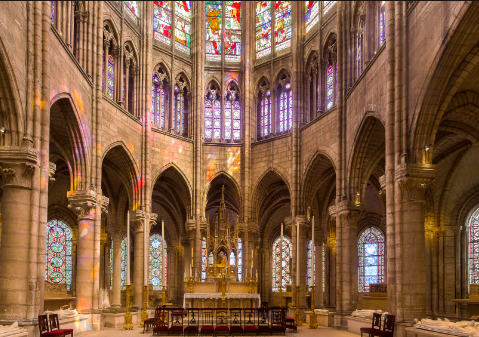
Beyond just his brilliant ideas, Suger’s influence came from working together with expert artisans. Masterpieces were born out of the creative atmosphere this synergy produced. The addition of sculpture, stained glass, and other creative aspects gave Gothic churches a depth and complexity that captivated the attention of onlookers and laid the groundwork for later artistic trends.
The ensuing growth in popularity of Gothic architecture was partly attributed to the construction of the Notre-Dame Cathedral in Paris. Built throughout several centuries, the cathedral is an homage to the collaborative efforts of numerous artisan builders, architects, and craftspeople. The intricate sculptures, gargoyles, and lofty spires of Notre-Dame are excellent illustrations of the meticulous artistry that defines the Gothic style.

Gothic architecture spread throughout Europe, giving rise to other architectural wonders such as the Cathedrals of Chartres and Canterbury. Apart from their remarkable architectural style, these structures garnered attention due to their symbolic significance and the enthusiasm of their constructors.
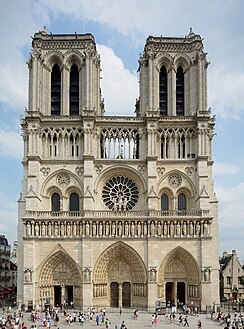
To sum up, the Gothic church style is a tribute to the creativity and brilliance of the visionaries who shaped the architectural environment of medieval Europe. Thanks to the collaborative efforts behind renowned buildings such as Notre-Dame and Chartres, as well as Abbot Suger’s innovative ideas at Saint-Denis, Gothic architecture came to symbolize both spiritual transcendence and creative expression.
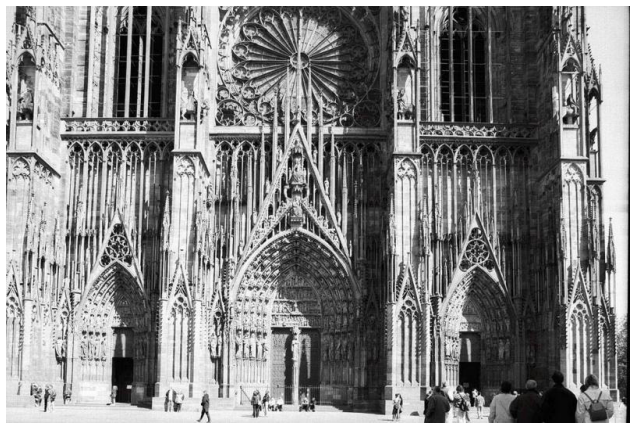
The ability of the Gothic church aesthetic to evoke wonder and a feeling of celestial connection accounts for its enduring appeal. The exquisite workmanship, pointed arches, and ornate ornamentation not only changed the physical surroundings but also provided inspiration for various artistic mediums.
Work Cited:
Figure 1: Gothic architecture, geometry, and the aesthetics of … (n.d.). https://scholarworks.uni.edu/cgi/viewcontent.cgi?article=1114&context=universitas
Figure 2: Wikimedia Foundation. (2024, January 24). Basilica of saint-denis. Wikipedia. https://en.wikipedia.org/wiki/Basilica_of_Saint-Denis
Figure 3: Tourisme, S.-S.-D. (n.d.). Saint-Denis Basilica, Royal Necropolis of France. Basilica of St Denis. https://uk.tourisme93.com/basilica/
Figure 4: Tourisme, S.-S.-D. (n.d.). Saint-Denis Basilica, Royal Necropolis of France. Basilica of St Denis. https://uk.tourisme93.com/basilica/
Figure 5: Wikimedia Foundation. (2024b, January 24). Notre-Dame de Paris. Wikipedia. https://en.wikipedia.org/wiki/Notre-Dame_de_Paris
Figure 6: Wikimedia Foundation. (2024b, January 24). Notre-Dame de Paris. Wikipedia. https://en.wikipedia.org/wiki/Notre-Dame_de_Paris
Figure 7: Gothic architecture, geometry, and the aesthetics of … (n.d.). https://scholarworks.uni.edu/cgi/viewcontent.cgi?article=1114&context=universitas

2 Comments. Leave new
I also wrote about the gothic cathedrals. It seems like we were both drawn towards the aesthetic because of the craftsmanship behind the buildings that turn them into works of art. I know that these buildings often take centuries to build, but I am not sure how the architects kept track of the original designs or if they made their own adaptations along the way. I am wondering if you know anything about this process. Notre-Dame is a perfect example since it underwent a tragic fire in 2019. I am unsure if they will build it back exactly as before, or if new structural technologies will be implemented. I would love to know what you think!
Gothic cathedrals are absolutely some of the most breathtaking works of architecture humans have ever built. I had no idea that Notre-Dame took almost 200 years to build—these buildings are such an amazing showcase of craftsmanship, especially stonemasonry and stained glass window-making. I think it’s really interesting how the architecture of churches in their respective time periods mimics the ideology of the church and its followers at the time—maybe you could mention a bit more about it. How does Catholicism in the 12-14th centuries relate to the opulent, awe-inspiring cathedrals of the time?